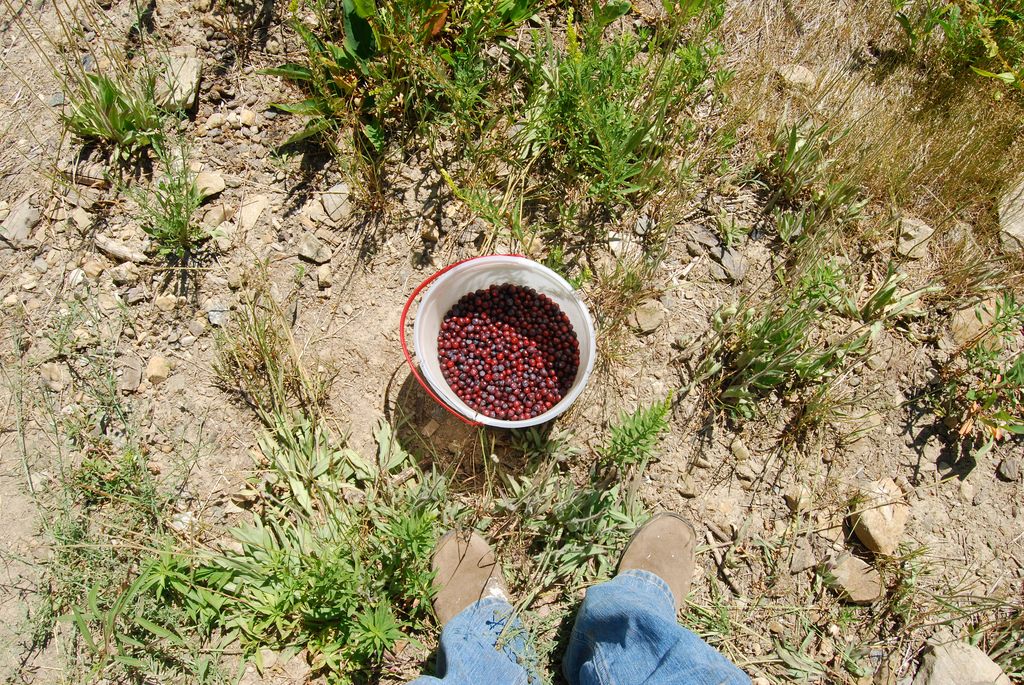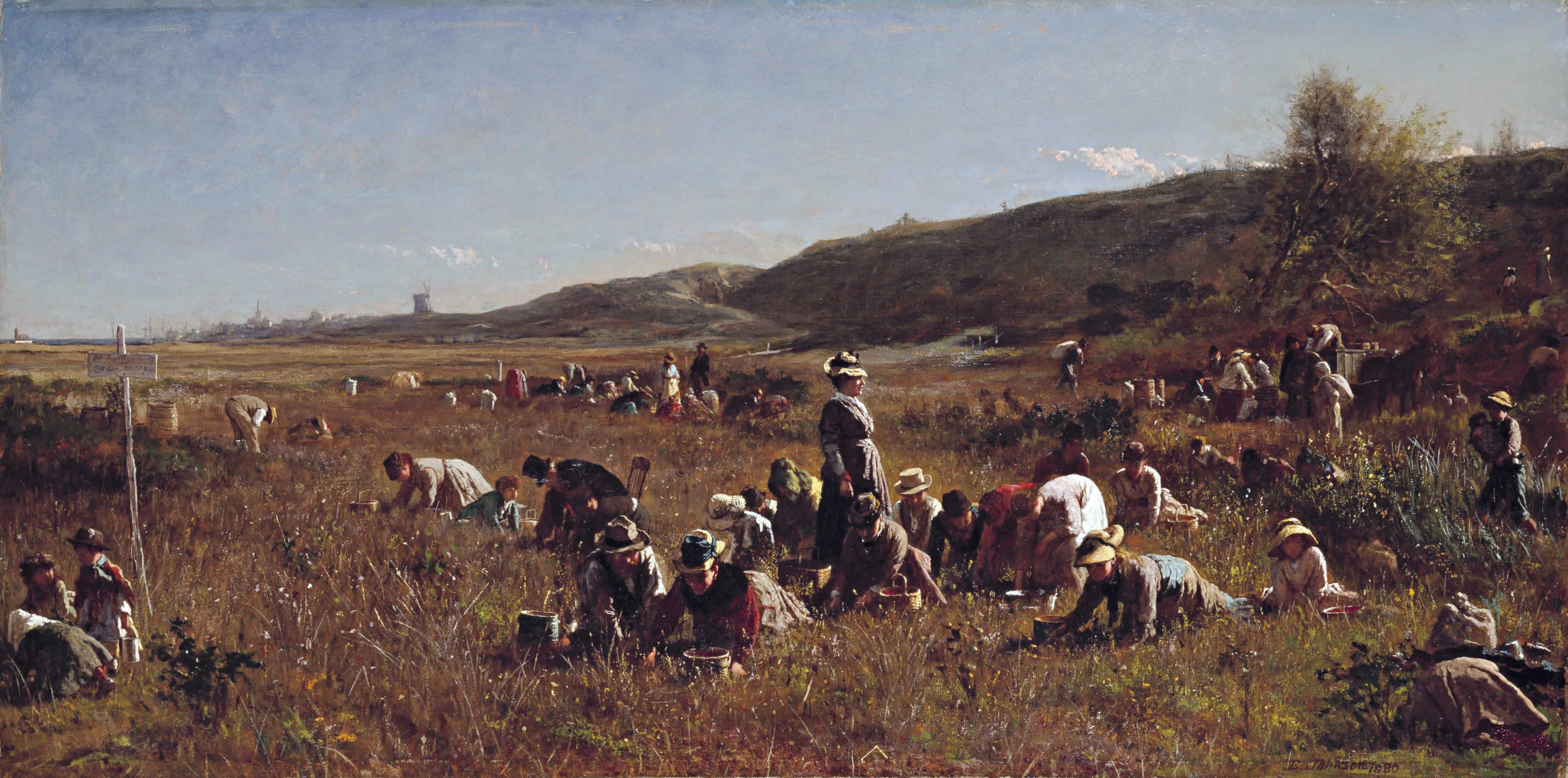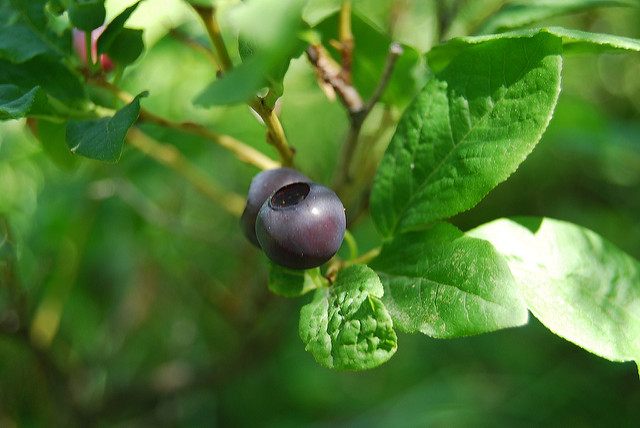Will We Ever Tame The Wild Huckleberry?
Domestication is on hold—even as threats to the iconic berry grow.

Huckleberries hanging out in Washington’s Gifford Pinchot National Forest. (Photo: US Forest Service/Public Domain)
Last spring, readers of the Northwest Spokesman-Review were greeted by a terrifying headline: ”Huckleberry Picking Banned in Idaho Panhandle Forests”.
Those who pressed on found chilling phrases: “government overreach”; “closed for the season.” Others saved themselves a heart attack by checking the date—April 1st. “Sucked me right in,” wrote one relieved commenter.
Like most good pranks, this one hit close to home. As pressure on the wild huckleberry increases—from recreation, commercial operations, and new land use practices—longtime enthusiasts fear for the berry’s ability to thrive. They may even be worried enough to tame it.
The Pacific Northwest takes huckleberries very, very seriously. Starting in July, droves of huckleberry hounds fall on state parks and roadside patches, eyes peeled and picking pails in tow. Soon after, any berries that aren’t scarfed on sight begin turning up in everything from snow cones to daquiris to barbecue sauce. States fight over them: there are several self-proclaimed huckleberry capitals, and Idaho has made it their official fruit. Individuals fight over them, too: in Montana in 2014, gunfire was exchanged over potential patch pilfering. “There’s probably a million huckleberry pickers in the Pacific Northwest,” says Malcolm Dell, founder of the Wild Huckleberry Association and a longtime picker himself. “It’s much bigger than people realize.”

Yields from two hours’ worth of huckleberry picking. (Photo: Cheryl Reed/CC BY 2.0)
If you haven’t been out there yourself, though, you’ve likely never tasted one. Unlike its tamer counterparts—the docile blueberry, the genial strawberry—the huckleberry remains almost entirely undomesticated. There are zero huckleberry farms, and most wild stands are unmanaged. Some nurseries sell seedlings, but they take years to bear fruit. By and large, there’s only one way to eat fresh huckleberries: by the fistful, straight off the branch. (If you can’t make it into the woods, there is one other option—“you can always tell when the first crops are coming on because there’s huckleberries on Craigslist,” says Dell.)
This doesn’t have to be the case. Native Americans cultivated wild huckleberry stands, encouraging their growth with controlled burns. When early European settlers tried to transplant the berries elsewhere, they failed miserably, for a very basic reason: they took the wrong part of the plant. Huckleberries spread via rhizomes, long, leggy strands that look like roots, but are really just underground stems. “They think they’re digging up a plant, but they’re just digging up a limb,” says Dell. “Replanting” one is like burying a stick—nothing happens.
Enough failed attempts, and huckleberries developed a reputation for being unfarmable, says Dell.

Cranberry harvesters in 1880, as painted by Jonathan Eastman Johnson. (Image: WikiCommons/Public Domain)
All crops, of course, started out wild. It takes dedicated botanists and scores of growing seasons before plants are prolific and consistent enough to grow fruit that doubles as a product. Strawberries needed hundreds of years to transform from tiny meadow-lurking treasures to golf ball-sized row crops. Blueberries have only been under our thumb since 1916.
“Huckleberries were about to follow the same path, but the funding got cut,” explains Dell. One botanist, Dr. Danny Barney, spent decades working on a tame huckleberry, in a dedicated lab at the University of Idaho. He grew his plants from seeds, skipping the tricky rhizomes entirely. As he crossbred generation after generation, the berries clumped bigger and ripened better. They developed thicker skins, and more consistent flavor.
Barney was one or two generations away from a fully civilized huckleberry when the University of Idaho ran into budget trouble and closed his lab. He has since retired to Alaska, where he hopes to continue his experiments—but he can’t do it all on his own, and state support is likely not in the cards. Despite their on-the-ground support, to the Idaho government, “huckleberries are just small potatoes, so to speak,” says Dell.

A Montana huckleberry, in profile. (Photo: Julie/CC BY 2.0)
For many fans, the huckleberry’s wildness is part of its appeal. (After all, you probably wouldn’t pull a gun out for a carton of Driscoll’s.) “Huckleberry enthusiasts tend to be a little bit of a different breed,” says Dell. “They’re more independent. They don’t want huckleberries, by and large, to be domesticated.”
But like so many secret joys, the huckleberry is under a lot of stress. “The pressure on the wild crop is unbelievable,” says Dell. Forest services across the Northwest have cut down on logging and are building fewer roads—good news for many species, but bad for the huckleberry, which grows best in sunny, open areas. Besides the millions of recreational pickers, there are commercial crews, which will pluck a whole stand clean and sell the lot to restaurants and vendors. (There are also bears, who have been known to have their own favorite patches). “They all fight for their piece of the pie,” says Dell. “There are conflicts, and they’re going to increase.”
For Dell, domestication would let huckleberry lovers have it both ways. “They’d have the commercial crops that are grown in the fields, and then there’d be the wild picking that still goes on for recreationalists,” he says. Barney’s research is publicly available, and his seeds are in several federal collections, waiting to be planted. Until then, their cousins will grow wild, awaiting their fate.
Gastro Obscura covers the world’s most wondrous food and drink.
Sign up for our regular newsletter.

























Follow us on Twitter to get the latest on the world's hidden wonders.
Like us on Facebook to get the latest on the world's hidden wonders.
Follow us on Twitter Like us on Facebook